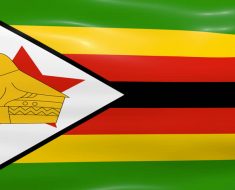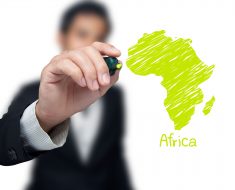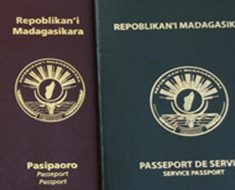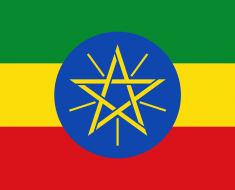Do you know that the Oldest Surviving Kingdom in the World is Great Benin Kingdom and is 2054 years Old? This piece reveals over 50 amazing facts you never knew about the Great Benin Kingdom
The Great Benin Kingdom is probably Nigeria’s greatest empire. The Ogiso dynasty lasted for about 854 years plus an interregnum of 285 years between the reign of Ogiso Orire and Ogiso Odia, there was an interregnum of 70 years between Ogiso Owodo and Oba Oranmiyan plus 845 years of Oba ruler-ship till date.
Below are 30 amazing facts about the Great Benin Kingdom:
1. The First Storey Building in Nigeria was built at Ughoton by the Dutch in the year 1718, and it was called “The Factory”. The said building was destroyed by the British during the war against the Benins in 1897. The site of the building is still intact.
2. The Oldest Church in West-Africa was established in Great Benin Empire by the Earliest Portuguese missionaries in the 16th Century which is today known as the Holy Aruosa (Benin National Church). Pope Pius XII visited Benin and handed the church to the Oba of Benin, Oba Oreoghene in 1692AD.
3. The first Known Embassy Established in Nigeria was in Benin during the reign of Oba Esigie in the 16th century.
4. The Oldest known letter written in Nigeria was by Duarte Pires instructed by Oba Esigie which was addressed to King John II, on the 20th October, 1516AD. The second oldest letter was written by Anthonio Domingo (Great-grand Son of Oba Olua) to the Pope to seek for missionary assistance in other to spread Christianity in Benin Empire in 1652AD.
5. Oba Orhogbua founded Lagos and planted a dukedom, the Obaship of Lagos (Eko).
6. Oldest ever recorded market in Africa is Ogiso (Agbado) Market dated 60BCE.
7. The first ever recorded bank (Owigho) in present day West-Africa was built in Benin kingdom by Oba Eresoyen, construction started in the year 1740AD and was completed in the year 1743AD.
8. Queen Idia (Oba Esigie mother) is the first Oba’s mother to be alive to see her son becoming an Oba. That’s because traditionally previous Crown prince mothers were killed before their Sons ascend the throne.
9. Ga tribe of present day Ghana migrated from Benin during Oba Udagbedo reign (1299-1334)
10. Oduduwa was the exiled crowned prince from Benin known as Ekaladerhan, which is being purported as the progenitor of the Yoruba race.
11. The monarch of Warri kingdom is an off shoot of the royal house of Benin kingdom founded by prince Iginuwa the Son of Oba Olua in the 15th century.
12. The Osemawe of Ondo was corrupted from Osemwughe, the Benin warrior who deserted Udo town, when there was war between Benin City and Udo town.
13. The word Ondo was corrupted from the town “Emwan N’Udo” (people of Udo town)
14. The world most famous mask Queen Idia mask was the face of FESTAC 77’ held in Lagos.
15. The word Benin was corrupted from Ubini by the Portuguese explorer meaning “a place of heavenly pageantry and prosperity”
16. Oba Esigie is the first King in Africa to be baptized in the year 1504AD in Benin.
17. The King of Benin can in a single day make 20,000 men ready for war, and, if need be, 180,000, and because of this he has great influence among all the surrounding peoples’ … His authority stretches over many cities, towns and villages. There is no King thereabouts who, in the possession of so many beautiful cities and towns, in his capital – Olfert Dapper, description of Africa, 1668.
18. According to the Guinness Book of Records (1974 edition) described the walls of Benin City and its surrounding kingdom as the world’s largest earthworks carried out prior to the mechanical era.
19. According to estimates by the New Scientists Fred pearce, Benin City’s walls were at one point “four times longer than the great wall of China, and consumed a hundred times more material than the Great Pyramid of Cheops”
20. Benin City is surrounded by massive walls dug by Oba Oguola in 13th century and Oba Ewuare I in the 15th century.
21. Great Wall of Benin extended for some 16,000km in all, in a mosaic of more than 500 interconnected settlement boundaries. They covered 6, 500sq km and were all dug by the Edo people.
22. The Great wall of Benin took an estimated 150million hours of digging to construct, and are perhaps the largest single archaeological phenomenon on the planet.
23. Benin City is the first City to have a semblance of street lighting in the world.
24. The Portuguese were the people who called our land “Great City of Benin” because they were astonished with what they saw that the Edo people achieved centuries before any major cities in the world.
25. 1n 1691, the Portuguese ship captain Lourenco Pinto observed: “Great Benin, where the king resides, is larger than Lisbon; all the streets run straight and as far as the eyes can see.
26. The Binis are the best bronze casters (Igun – eronmwon) in the world.
27. Two kings were installed without a crown, Ogiso Igodo (40BC-16AD) and Oba Oranmiyan (Odolorre) 1170-1200AD.
28. Great Benin is known as the cradle of Black civilization and the centre of the world (Edorisiagbon).
29. The Benin were the first to use sophisticated weapons (guns) to fight war(Idah war) in the present day Nigeria in about 501 years ago (August, 1516), the war was led by Oba Esigie mother (Queen Idia).
30. All Oba’s in Lagos(Eko) were all buried in their ancestral home (Benin City) until late 19th century, to further lay credence to that Oba Osemwende in 1834 instructed Idewu Ojulari, the Oba of Lagos to zegbele(kill himself) the instruction was, expectedly, complied with. The Lagos Oba complied by taking poison.
31. Benin is named after the body of water on which it lies – the ‘Bight of Benin’.
32. The people of Benin are called as Beninese.
33. Benin became independent from France on August 1, 1960.
34. By about 1750, the Kingdom of Dahomey (a part of Benin) was earning an estimated £250,000 per year by selling Africans to the European slave-traders.
35. The last ship of slaves departed from Dahomey for Brazil in 1885.
36. Benin was the first country in the 1990s to make the transition from a dictatorship to a multiparty democracy.
37. The capital of Benin—Porto Novo—was developed as a port for the slave trade.
38. The country’s only seaport and international airport are in Cotonou, which is also the largest city in the country.
39. The high prices of legal petrol forces the locals to buy it illegally for cheap. Petrol is illegally sourced from Nigeria and is sold in the country. Petrol stations are scarce in the country.
40. Almost 4.5% of the country’s population uses the internet.
41. Crime rate is low in the country. However, theft is a problem and many wealthier homeowners generally hire a night watchman.
42. The red color on its flag symbolizes courage, yellow stands for wealth and green symbolizes hope and revival.
43. People generally eat rice, vegetables, and meat. Food is prepared at least twice a day. A variety of fish is eaten in the south while beef is more popular in the north.
44. In the country’s culture, it is considered bad to eat with the left hand or offer another person something with it.
45. White persons visiting the country are referred to as “yovo”. Do not be surprised to find people and kids shouting this word behind you if you happen to visit the country. The people, however, are very friendly and lively.
46. People of the country do not like to be photographed. They believe that a photograph can be used to cast a sell or a course.
47. While being very poor, Benin is also one of the most politically stable countries in the West Africa.
Places of Interest
Ouidah:
Spelt “WHYDAH” in history books written in English, it is the “Museum City”. It is evocative of European penetration with its ancient Portuguese, English, Danish and French trading posts or strongholds. There can be seen the remains of the ancient port from which slaves were boarded and shipped to the Americas.
Abomey:
Referred to as the “Royal City”, it is the capital of Dan-Home, the ancient Kingdom. It has one of the most impressive museums of Africa. Its artists and craftsmen, be they weavers, jewelers, woodcarvers, iron and brass workers are famous far beyond the boundaries of the Republic of BENIN.
Allada:
It is the city, the cradle of “voodoos” in vogue in the Americas, namely in Brazil, West Indies, the Caribbean countries.
Porto Novo:
The “City with three Names” (Porto Novo,Hogbonou,Adjatche) . It is Benin’s administrative capital, right in the middle of the Yoruba land.
Nikki:
The historic capital of the Baatonu people.
Natitiogou:
Its castle-type “TATA-Sombas” and the traditional huts of the Tanekas and other tribes in the North where there are the richly varied fauna of the National Parks of Pendjari and “W”.
Ganvie:
AFRICA’s unique floating villages built on stilts. A population of several thousand. Motorboats or dugouts are available for the trips across the lake to the Ganvie. During the trip, there are Akadjas made of stakes and bushes in the shape of open circles or triangles driven into the bed of the plantless Lake. Seeking shelter among the foliage, the fish can thus be easily caught or kept for breeding.
| Independence | 1 August 1960 (from France) |
|---|---|
| Capital City | Porto-Novo |
| Largest City | Cotonou |
| Total area | 112,622 sq km |
| Population | 11,038,805 (2017 est.) |
| Demonym | Beninese |
| Official Language | French |
| Borders | Togo, Burkina Faso, Niger and Nigeria |
| Currency | West African CFA franc (XOF) |
| Religion | Catholicism, Islam, Vodoun |
| Life expectancy | 61.9 years (2016) Life expectancy at birth indicates the number of years a newborn infant would live if prevailing patterns of mortality at the time of its birth were to stay the same throughout its life. |
| Suffrage | 18 years of age; universal |
| Government type | presidential republic |
| President | Patrice Talon |
| Climate | tropical; hot, humid in south; semiarid in north |
| Terrain | mostly flat to undulating plain; some hills and low mountains |
| Natural resources | small offshore oil deposits, limestone, marble, timber |
| Agricultural land | 31.3% |
| Birth rate | 35 births/1,000 population (2017 est.) |
| Death rate | 7.9 deaths/1,000 population (2017 est.) |
| Sex ratio | 1.01 male(s)/female (2016 est.) |
| National anthem | “L’Aube Nouvelle” (The Dawn of a New Day) |
| National symbol | leopard |
| National colors | green, yellow, red |
| Industries | textiles, food processing, construction materials, cement |
| Exports | $1.713 billion (2016 est.) cotton, cashews, shea butter, textiles, palm products, seafood |
| Imports | $2.591 billion (2016 est.) foodstuffs, capital goods, petroleum products |
| GDP – per capita (PPP) | $2,200 (2016 est.) |
| Internet country code | .bj |
| Time Zone | WAT (UTC+1) |
| Calling Code | +229 |
| Drives on the | Right |
| Data sources | CIA, Wikipedia |
| Table last updated | September 5, 2017 |













Hi, it appears you’ve conflated two places; Benin in Edo State, Nigeria is one, while the other is Republic of Bénin, a country in its own right.